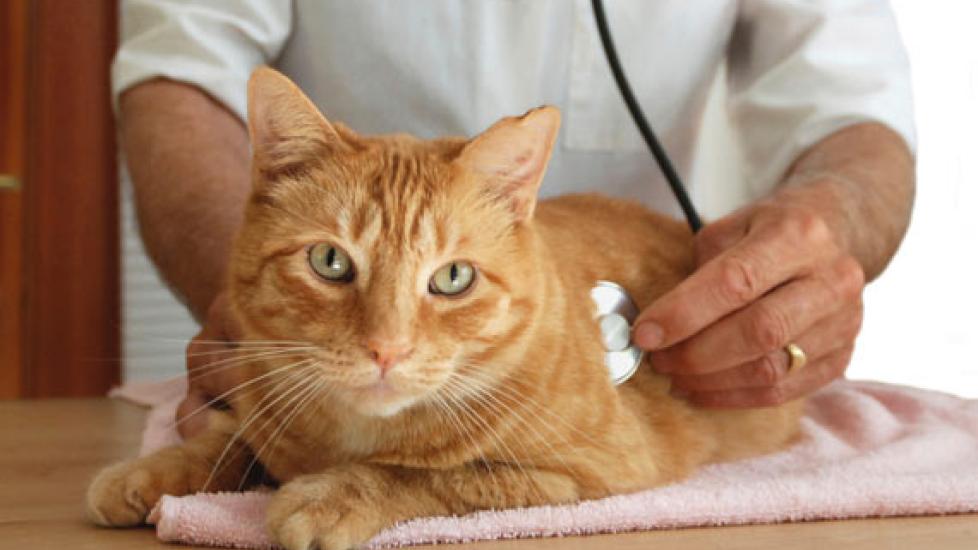Taking Steps to Prevent Cancer in Pets
Cancer prevention is certainly a “hot-button” topic in human medicine, and many of the same questions and responses surrounding this subject translate to veterinary medicine as well.
The first step in preventing disease is identifying what causes it in the first place. To say a particular variable “causes” cancer would require performing an accurately designed research study—a daunting task in veterinary medicine because of our inability to control for, or accurately record, the variables that could potentially influence a pet’s exposure to risk factors.
An example of a known etiological (causative) factor for a predisposition to cancer in animals occurs in cats infected with either the Feline Leukemia Virus (FeLV) or Feline Immunodeficiency Virus (FIV).
Recommended Pet Products
- Nutramax Proviable Probiotics & Prebiotics Digestive Health Supplement for Dogs & Cats, 160 count$89.98Chewy Price
- Fera Pets USDA Organic Pumpkin Plus Fiber Support for Dogs & Cats, 90 servings$34.95Chewy Price
- All Four Paws Comfy Cone E-Collar for Dogs & Cats, Black, Small$20.24Chewy Price
- Virbac Epi-Otic Advanced Ear Cleaner for Dogs & Cats, 4-fl oz bottle$12.34Chewy Price
Cats infected with FeLV are 60 times more likely to develop lymphoma/leukemia compared with healthy non-infected cats. Cats infected with FIV are five times more likely to develop the same cancers. Cats co-infected with both FeLV and FIV are 80 times more likely to develop lymphoma than non-infected cats.
FeLV infection was the most common cause of blood borne cancers in cats during the 1960s - 1980s. During that time, approximately two-thirds of cats with lymphoma were co-infected with FeLV.
With the development of better screening tests to eradicate or isolate infected cats, as well as commercially available FeLV vaccines, the number of FeLV positive cats decreased dramatically after the late 1980s. However, cats still frequently develop lymphoma, and the overall prevalence of this cancer actually increased over time. The disease appears to be shifting to other anatomical locations, namely the gastrointestinal tract. What then, is responsible for causing lymphoma in cats now?
There are only a handful of research studies available that examine the causes of cancer in pets. To my knowledge, despite the large body of information on the internet suggesting otherwise, commercial diets, vaccination (other than for sarcoma developments as listed below), tap water, shampoo, or cat litter have not been accurately studied and proven to cause cancer in pets.
There are three “take home” areas I would like to highlight that summarize what we know about proven causes of cancer in animals.
- Environmental exposures — The three biggest culprits included pollution, environmental tobacco smoke (ETS), and pesticides.
- There is evidence supporting an association between exposure to ETS and lymphoma and nasal tumors in dogs and lymphoma in cats.
- Exposure to pesticides containing dichlorophenocyacetic acid (2,4-D) is associated with increased risk of lymphoma in dogs; however, data is conflicting.
- Dogs living in urban areas are at increased risk for developing lymphoma.
- Neuter status — Hormones can act to promote or inhibit tumor development, depending on the specific cancer in question.
- Female dogs are less likely to develop mammary tumors when they are spayed early in life, presumably due to lack of exposure of mammary tissue to ovarian derived reproductive hormones.
- However, neutering may actually cause an increased risk of developing prostate cancer in male dogs, indicating a possible protective effect of hormones in such cases.
- Neutering may also increase risk of developing osteosarcoma and transitional cell carcinoma of the urinary bladder in dogs, regardless of gender.
- The administration of injections (not only vaccinations) can cause injection site sarcomas in cats, but the injection alone is not sufficient to create tumors. More and more evidence points to an inherent susceptibility to tumor development that is “set into motion” in response to the injection.
Despite not knowing the exact causes of cancer in pets, there are several preventative measures owners can take to help ensure their companions remain as healthy as possible for as long as possible.
One of the simplest preventative measures owners can do is to schedule regular physical exams for their pets every 6 to 12 months. This ensures that any changes in status, body weight, etc. are closely monitored and tracked over time so concerns can be addressed as soon as early signs are noted.
Any newly noted skin masses should be evaluated as soon as they are noted. It is impossible to determine if a skin mass is benign or malignant based on appearance or feel alone; a fine needle aspirate and/or biopsy should be performed to determine whether further action is necessary.
Routine lab work and imaging tests such as radiographs (X-rays) and ultrasound scan can also be helpful in assessing a pet’s overall health. Even when we are unsure about how to truly prevent cancer, such diagnostics can mean earlier detection of disease, and can often lead to a more favorable prognosis.
Cancer prevention is an important aspect of any pet’s routine healthcare, and these simple measures can help pet owners and their veterinarians work together to ensure that our beloved companions live longer, happier, and healthier lives.

Dr. Joanne Intile
Image: Thinkstock




